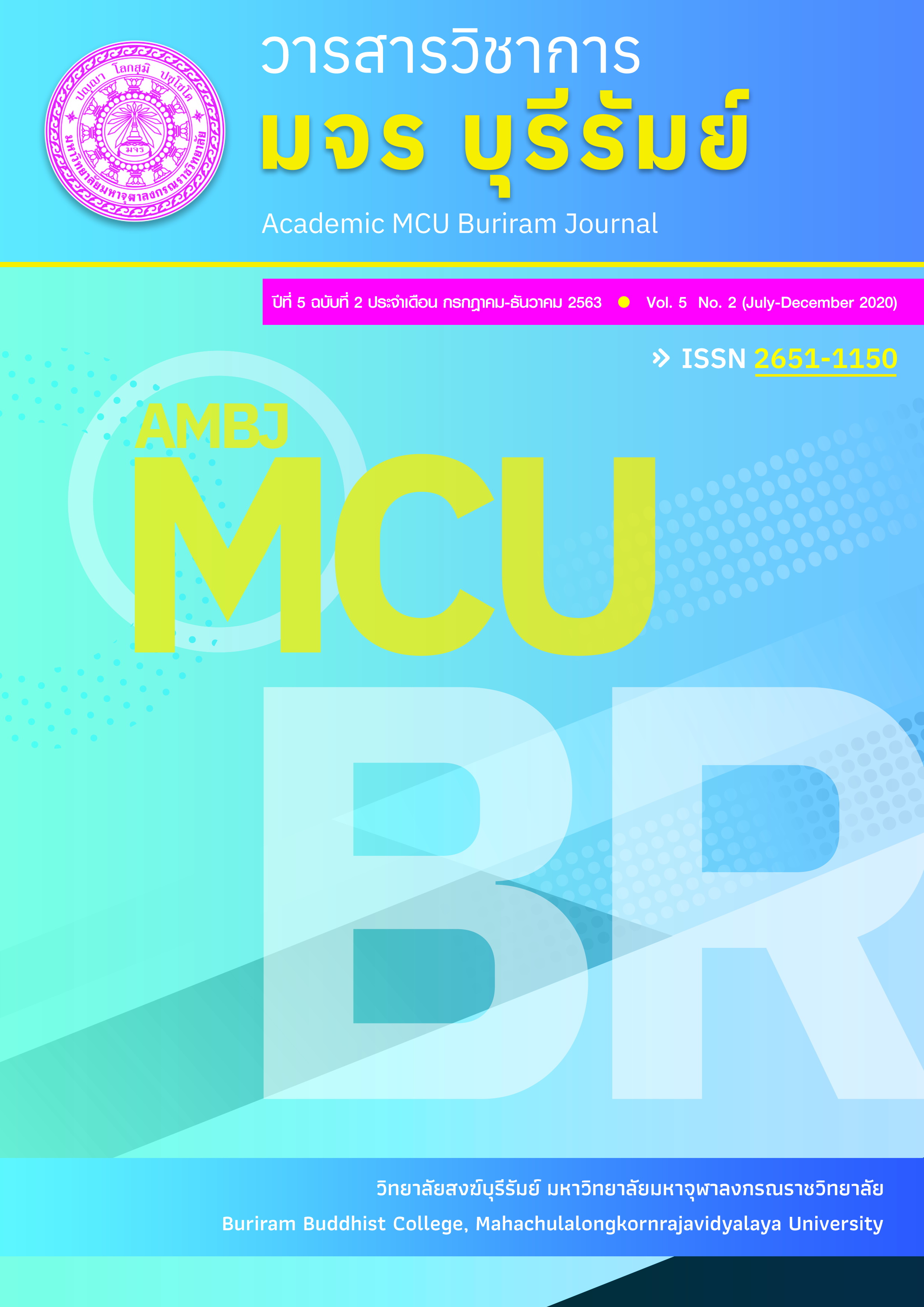Aesthetics Conversation in Buddhism and Creative Conversation in Thai Society
Keywords:
Aesthetics conversation, Buddhism, Creative Conversation, Thai SocietyAbstract
The objectives of the study of aesthetics conversation in Buddhism and creative conversation in Thai society is 1) to study patterns of using aesthetics conversation in Buddhism and constructive conversation in Thai society and 2) applying aesthetics of conversation in Buddhism with creative conversation aesthetics in Thai society.
The study found that using the principle of right speech in a conversational aesthetics including of being joy of speech, having love and unity to occur in Thai society, speaking with sweet words, honestly, not rude and offensive and saying things that are useful and appropriate, because speaking is the first step to building a good human relationship. The method of condemnation of speech is to be spoken by adhering to rules, abstaining from lying, abstaining from cynical speech, abstaining from abusive speech and abstaining from speaking prattle. Because the words of aesthetics are spoken according to Buddhist principles, peace means warmly hospitality to the person for achieve the goals from setting. In addition, the control of mindfulness acts as an ally to the interlocutor, giving importance to the inner feelings of each other, based on the principles of four sublime states of mind: loving-kindness, compassion, sympathetic joy, and equanimity. If the heart is kindly, then speak to other well, think well to them and requires practice. It must be practiced and benevolent in order to develop a practice, following the fourth precepts, and adhere to the principle of right speech.
References
กิติมา สุรสนธิ. (2541). ความรู้ทางสุนทรียสนทนา. กรุงเทพมหานคร: มหาวิทยาลัยธรรมศาสตร์.
ปรมะ สตะเวทิน. (2541). การสื่อสารมวลชน: กระบวนการและทฤษฎี. พิมพ์ครั้งที่ 2.กรุงเทพฯ: ภาพพิมพ์.
พระธรรมปิฎก (ประยุทธ์ ปยุตโต). (2538). พจนานุกรมพุทธศาสตร์ฉบับประมวลธรรม. กรุงเทพฯ: มหาจุฬาลงกรณ์ราชวิทยาลัย.
พระมหาไพรัช โชติรตโน (เชื้อแก้ว). (2548). มโนทัศน์เรื่องวาจาในพระพุทธศาสนา: ศึกษาเชิงวิเคราะห์. นครปฐม: มหาวิทยาลัยมหามกุฏราชวิทยาลัย.
สวนิต ยมาภัย. (2526). การสื่อสารของมนุษย์. กรุงเทพฯ: 68 การพิมพ์.
อวยพร พาณิช และคณะ. (2533). พัฒนาการของคำขวัญโฆษณาในงานประชาสัมพันธ์ในหนังสือพิมพ์. กรุงเทพมหานคร: จุฬาลงกรณ์มหาวิทยาลัย.
_________. (2543). ภาษาและหลักการเขียนเพื่อการสื่อสาร. กรุงเทพมหานคร: สำนักพิมพ์แห่งจุฬาลงกรณ์มหาวิทยาลัย.
มหาจุฬาลงกรณราชวิทยาลัย. (2534). พระไตรปิฎกพร้อมอรรถกถา แปล ชุด 91 เล่ม. กรุงเทพมหานคร: โรงพิมพ์มหามกุฏราชวิทยาลัย.
Downloads
Published
How to Cite
Issue
Section
License
ทัศนะและความคิดเห็นที่ปรากฏในบทความวารสารฉบับนี้ถือเป็นความรับผิดชอบของผู้เขียนบทความนั้น ไม่ถือเป็นทัศนะและความรับผิดชอบของบรรณาธิการ





